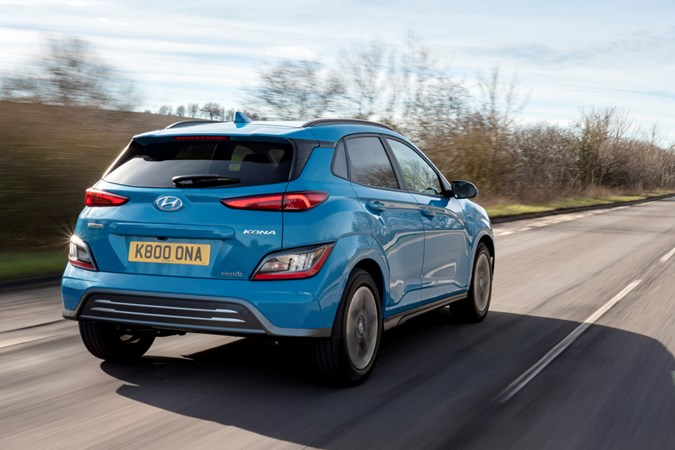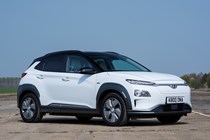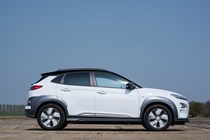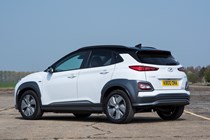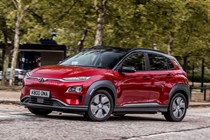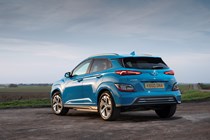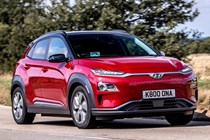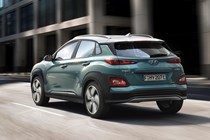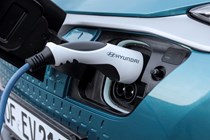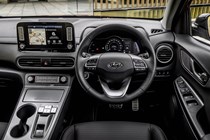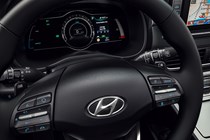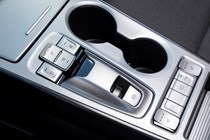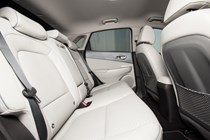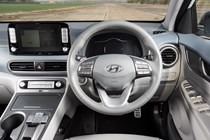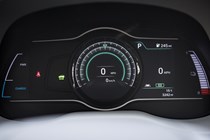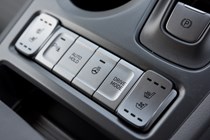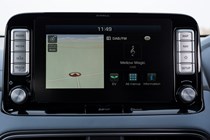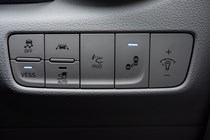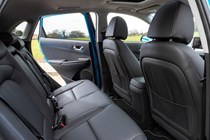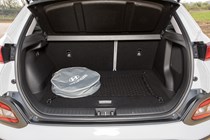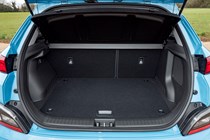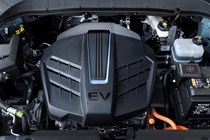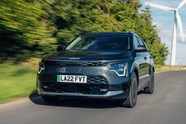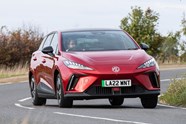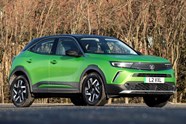
Hyundai Kona Electric SUV (2018-2023) review
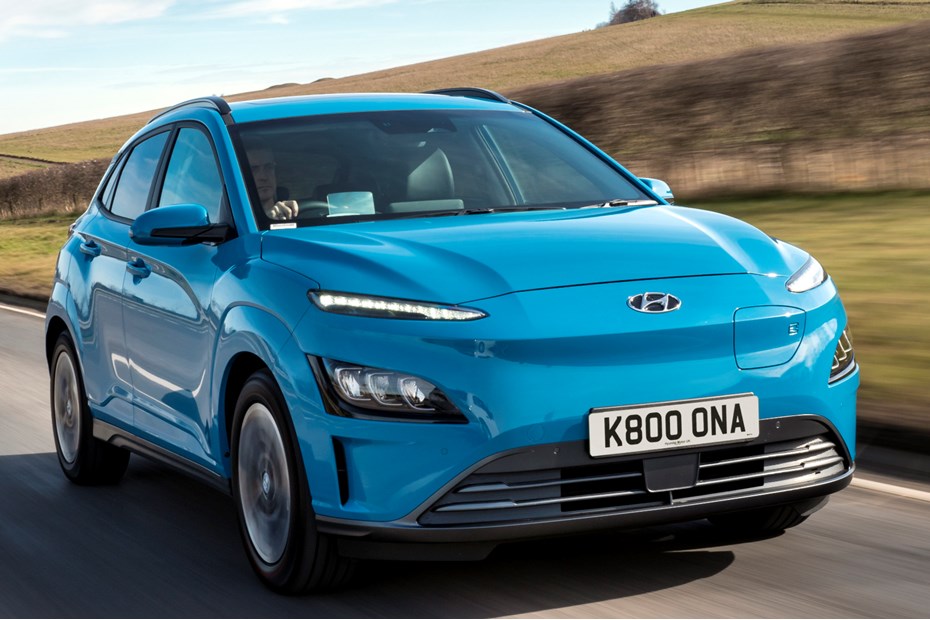
At a glance
| Price new | £30,750 - £41,500 |
|---|---|
| Used prices | £5,756 - £18,494 |
| Road tax cost | £195 - £620 |
| Insurance group | 20 - 27 |
Get an insurance quote with

|
|
| Fuel economy | 4 - 4.3 miles/kWh |
| Range | 180 - 301 miles |
| Miles per pound | 6.3 - 12.6 |
| Number of doors | 5 |
| View full specs for a specific version | |
Available fuel types
Fully electric
Pros & cons
- Good value
- Easy to use
- Up to 279 miles of range
- Cramped rear seats and small boot
- More expensive than rivals
- Funky styling isn't to everyone's taste
Hyundai Kona Electric SUV (18-23) rivals
Overview
The Hyundai Kona Electric is – you’ve guessed it- an electrified version of the Hyundai Kona with no emissions belching out of an exhaust. It’s an electric SUV, which means it has plenty of rivals to contend with. There’s the Kia Niro EV, a car it shares mechanicals with, as well as the bargain-tastic MG4, easy-going Vauxhall Mokka Electric and tech-heavy Tesla Model Y.
It’s easy to spot the Kona Electric alongside its more conventionally propelled siblings. First-up, that moustache-like upper grille is gone, while the larger lower grille gives way to a dimpled blank panel, the left-side of which hides the charging port. Additionally, the bumpers are re-profiled and it’s finished in a range of colours unique to the Electric model, with two-tone finishes available.
What’s it like inside?
Inside there are more changes, with paler finishes available for the grey plastics, and a high-set centre console, similar to that of the Hydrogen-fuelled Hyundai Nexo, complete with a push-button transmission selector.
There’s more colour variation in the Kona Electric over the standard model too, which is further differentiated by the higher level of the centre console. As the Electric doesn’t require a conventional gear lever, its place is taken by a collection of buttons to select the transmission mode. The materials used and general design may well be acceptable for a mid-priced SUV, but with a UK price north of £30k we don’t think it’s quite premium enough.
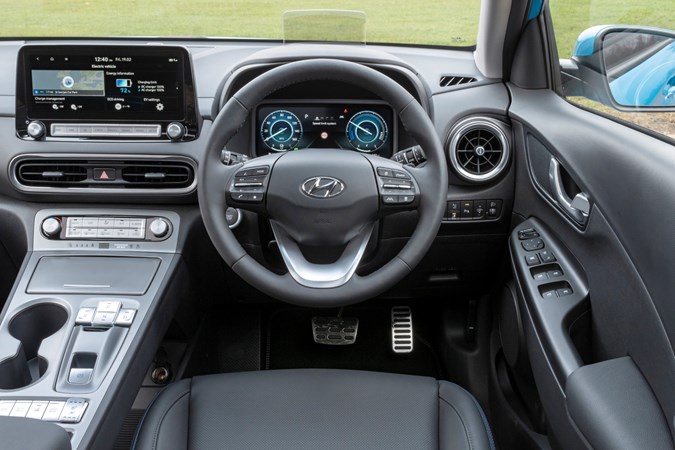
The boot is smaller than the ones found in its rivals. There’s not much in the way of a load lip, but there’s no escaping the fact that it’s not very long or deep.
Hyundai Kona Electric motors and batteries
Entry point for the Kona Electric range is the 39kWh version, with 136hp and 395Nm of torque available instantly. Top speed is restricted to 96mph, while the 0-62mph acceleration benchmark takes 9.7 seconds. Hyundai claims a 180-mile range, while a full recharge on a 7kWh domestic wallbox should take around 10 hours.
More interesting is the punchier 64kWh version, with a 204hp electric motor. Peak torque is identical to the 39kWh mode. Top speed is just 104mph, but the 0-62mph sprint is dealt with in just 7.6 seconds. More impressive is the 279-mile official range, but remember as the battery is significantly larger in the 64kWh version a full recharge takes around 9.5 hours.
What’s it like to drive?
Take-off, thanks to the instantaneous power, is smile-inducingly brisk. It really is a car that will embarrass many a hot-hatch at the traffic light grand prix.
Like other electric cars, it’s refined, quiet and a doddle to drive and there’s a huge range of adjustability in the driving position allowing for a greater degree of comfort behind the wheel.
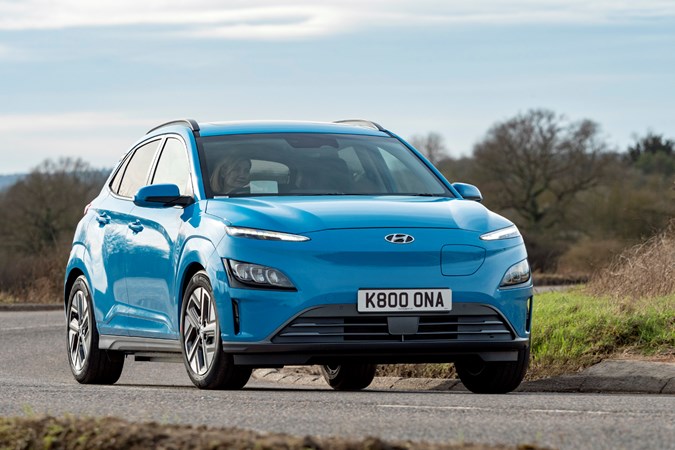
Bursts of acceleration aside, it’s not especially exciting to drive, but it doesn’t do anything incompetently. Cornering lines are easy to maintain and bodyroll is kept neatly in check, thanks largely to the low-slung position of the batteries at the base of the car.
Should it suit your driving style, the Kona Electric’s brakes can be dialled-up in terms of their energy recuperation properties. In their highest setting, the Hyundai can be driven as a one-pedal car – lifting off the accelerator will slow the car down to an extent that you rarely touch the actual brake pedal at all.
This is a similar operation to Nissan’s E-Pedal on the Leaf, but the action feels less aggressive in its operation. Plus, if you find it too much, you can dial down the effect by pulling on the paddle on the right-side of the steering wheel. Similarly, pulling on the left-handed one increases it again.
What models and trims are available?
There are only three trim levels to choose from. The 36kWh battery is available in SE Connect and Premium spec, while the 64kWh is also available in Premium as well as Ultimate spec.
SE Connect cars get adaptive cruise control, alloy wheels and parking sensors. Premium adds wireless phone charging, a 10.25-inch infotainment screen and KRELL speakers. Ultimate adds heated and ventilated front seats among other things.
